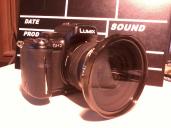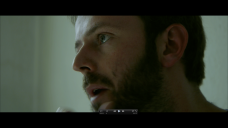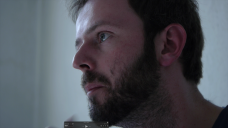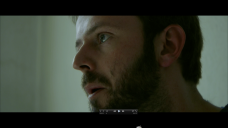
-
@Zaven13 How long did you record for in HBR? Did you record 25p or 30p?
-
@rorykane. I recorded the HBR for 1 min 24 sec and in 30p averaging around 80mb.
-
@tinbeo.. thanks I must have missed that post by Driftwood. I remember one where he suggested lowering the setting down 1000 at a time. I lowered the SH and H down to 60,000 and 50,000 and it worked but didn't look good with weired stuff going on with highlights. I'll try the B settings and see how that goes. I really need a decent 720 p to work because sometimes I have fast moving subjects.
I'm using a SD Ex 45mbs.
-
@thepalalias, I have the external mic that mounts on GH2 hot shoe. Am I to expect improvements with that mic using your Pasadena Pulse audio settings? If yes, what would be the nature of the improvements?
-
Well no 720p in S or SH on the B or C Sedna. Write error on SD Ex 45mbs. Any suggestions? I suppose I'll go back to what was working with Orion and wait for a fix or something that works.
-
Hot tips for beginners as shown in http://www.personal-view.com/talks/discussion/comment/47090#Comment_47090 and I still confused with all words button, slot, dun know if I get it done right by mixing Sedna with cluster 720 setting
-
@Zaven13 Thanks. Let me know if you get a chance to try a longer record time. 12min is the highest I've got.
-
@islanders66 lower the frame limits slightly till it works for your card - you don't need to touch bitrate.
-
@islanders66. Sedna_B, AQ1, HBR & 720p (50) SH recorded no problem & played back in camera. Average: 60 Mbps. Sandisk 45mbs card. I consistently find HBR too 'wobbly' & choppy, 720p motion just fine but pics softer than HBR. Subjectively, I'd say that v4d Orion (v2) looked sharper yet more filmic. Early days though.
-
Sedna A is sharper. Believe. You set 4d Orion to AQ1 to compare results.
-
Hey @driftwood. What's the difference in terms of visuals between Sedna A AQ1 and Q20? Thx, mate. Loading up A Q20 now.
-
@driftwood. I'll give Sedna_A a spin next. I'm after a setting with a minimum bitrate of 50Mbps, 25p (broadcast requirements), so it's either HBR or 720p. As the HBR exhibits too much rolling shutter, it's got to be 720p. Without your hard work - and VK's, of course – the GH2 wouldn't even be a starter, so a big THANKS. Heroic stuff.
-
shot an outdoor thingy with sedna q20 c it held out very good under heavy grading conditions, i'm rendering and uploading as we speak. shot in smooth all -2 hbr with the leica 25mm

 Photo0001.jpg1600 x 1200 - 506K
Photo0001.jpg1600 x 1200 - 506K -
@driftwood, Any idea why none of the patches (to my knowledge & testing) work with Clipwrap for HBR??
-
Thank you, @driftwood and all others involved in the hard work that result to this patch. I will be doing lots of testing tonight. I hope to use Sedna for a music video shoot tomorrow Saturday.
-
@edgenumbers Looking into it. I'm not sure if Clipwrap can handle the bitrates. Not totally convinced anymore with that package. Allan Tepper (PsF expert) has been asked to resolve the best use of HBR on the GH2. More news soon.
-
@driftwood, Thanks for the reply. Any idea why the Panasonic AVCAM importer plugin crashes Quicktime when I use the Sedna A profile? It's fine with B & C. Weird ??? When I view A & B in VLC I really do prefer A. Thanks so much for adding the audio patch.
-
@edgenumbers Same experience here with QT and Sedna A. QT quits.
-
Probably can't handle it. Its above AVC Intra for a start! ;-) I'll be running some tests on importing into NLE's etc... for the wiki. You're copying first the entire volume PRIVATE from SDcard to hard disk then importing I hope?
Test1: No problems so far with HBR footage at 25p straight into FCPX, colour correct and export media to h264 or Pro Res HQ File sizes at Mbps: Original mts file was around 70Mbps, Pro Res HQ 159Mbps, h264, 12Mbps

 Pro Res HQ Exported version Screen shot 2012-03-16 at 19.02.08.png2560 x 1440 - 2M
Pro Res HQ Exported version Screen shot 2012-03-16 at 19.02.08.png2560 x 1440 - 2M
 Original mts SEDNA HBR INTRA version - Screen shot 2012-03-16 at 19.10.33.png2560 x 1440 - 3M
Original mts SEDNA HBR INTRA version - Screen shot 2012-03-16 at 19.10.33.png2560 x 1440 - 3M
 h264 exported version Screen shot 2012-03-16 at 19.04.11.png2560 x 1440 - 3M
h264 exported version Screen shot 2012-03-16 at 19.04.11.png2560 x 1440 - 3M -
@driftwood any particular types of shots you're looking at for tests? FCP7 brought in a 24H and 24L file with no problem. Directly off of SD card (Sandisk 30mb/s).
-
@driftwood, Yep, copying card to disk before any other work.
-
@Zaven13 The metering and level control has been improved for all sources (internal and external mics alike). You can now lower the gain even further than before (allowing you to record a wider dynamic range with a lower noisefloor) or push the gain up slightly further than before without running into the "automatic" part of AGC like you did before.
In other words, you more consistency, more control and better information than before. I outline the exact settings used in one of my blogs at www.PasadenaPulse.net and you can read @dirkvoorhoeve`s excellent summary of the testing the team has done in the GH2 Audio Hacks thread here on Personal-View.
-
To those that asked for my analysis of the relative strengths of the patches, please understand that shooting and testing certain (very specific) points, cataloging and uploading all of that (the last test was 12 cards) while also trying to work has not left me with enough time to be useful in that area yet.
I think the @OnionBrain and @Driftwood comments about the improvements regarding noise in the red channel (and green in the gray) are worth looking out for, as a starting point and I`ve provided a fair amount of raw footage to test for yourself and hope to do more soon.
What I will say, is that I've found it useful to test the patches by throwing the MTS files into grading software, lifting the shadows and increasing the contrats (to make the linits of the noise patterns more obvious) or lowering the exposure to emphasize the highlights. I've also been looking first at the whole images and then at a 640X360 crop (which I then view fullscreen) to home in on the difference areas. In some cases, I`ve done the same at 320x180 to really home in on a specific noise patch.
-
What does he do with the grass he collects?
-
I would add that the best way to compare the patches (for me) tends to be by starting with their "weaknesses" rather than their strongest points. In the sample files I uploaded, there is less difference in the more properly exposed colored part of the magazines lower right corner than there is in the darkened white page at the extremity of that corner. And there`s a fair bit to be gleaned by looking at the gradient, highlight and noise pattern toward the left edge of the highlight on the left third of the screen.
The difference between Factory Defaults and Cluster in that last area is just huge when blown up and that the difference between Cluster vs Orion, Dark Matter and Sedna is equally huge. I honestly would be very disappointed if I had to use a non-intra patch on a dark shoot on this camera at this point.
But in terms of Sedna, there are too many variables and has been to little testing for me to say what the best things to look for are specifically. I`ve only spent one night shooting with with betas for 2 of the 6 patches and a few minutes shooting with the final versions of each of the final versions each so far. :)
Howdy, Stranger!
It looks like you're new here. If you want to get involved, click one of these buttons!
Categories
- Topics List23,993
- Blog5,725
- General and News1,354
- Hacks and Patches1,153
- ↳ Top Settings33
- ↳ Beginners256
- ↳ Archives402
- ↳ Hacks News and Development56
- Cameras2,368
- ↳ Panasonic995
- ↳ Canon118
- ↳ Sony156
- ↳ Nikon96
- ↳ Pentax and Samsung70
- ↳ Olympus and Fujifilm102
- ↳ Compacts and Camcorders300
- ↳ Smartphones for video97
- ↳ Pro Video Cameras191
- ↳ BlackMagic and other raw cameras116
- Skill1,960
- ↳ Business and distribution66
- ↳ Preparation, scripts and legal38
- ↳ Art149
- ↳ Import, Convert, Exporting291
- ↳ Editors191
- ↳ Effects and stunts115
- ↳ Color grading197
- ↳ Sound and Music280
- ↳ Lighting96
- ↳ Software and storage tips266
- Gear5,420
- ↳ Filters, Adapters, Matte boxes344
- ↳ Lenses1,582
- ↳ Follow focus and gears93
- ↳ Sound499
- ↳ Lighting gear314
- ↳ Camera movement230
- ↳ Gimbals and copters302
- ↳ Rigs and related stuff273
- ↳ Power solutions83
- ↳ Monitors and viewfinders340
- ↳ Tripods and fluid heads139
- ↳ Storage286
- ↳ Computers and studio gear560
- ↳ VR and 3D248
- Showcase1,859
- Marketplace2,834
- Offtopic1,320






